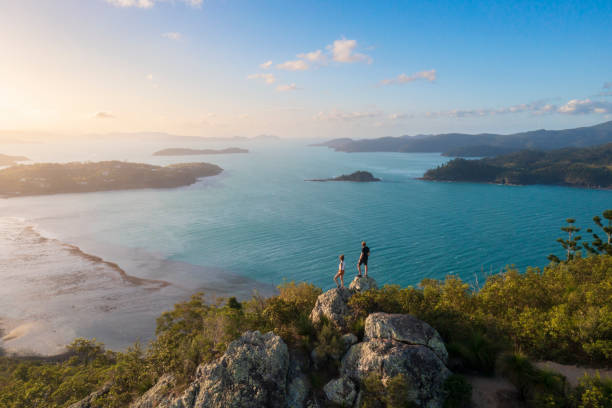Discover Australia: A Haven for Nature, Culture, and Adventure Tourism
The tourism and travel industry in Australia stands as a vital component of the national economy, characterized by its rich diversity, natural beauty, and cultural heritage. This industry attracts millions of international and domestic travelers each year, drawn by the allure of the Great Barrier Reef, the rugged Outback, vibrant cities like Sydney and Melbourne, and the unique wildlife that calls Australia home. The sector not only provides leisure and adventure but also fosters cultural exchange and supports local communities through sustainable tourism practices. In this article, we will delve into the various aspects that make Australia a top travel destination and examine the impact of tourism on the country’s economy and environment.
The Pillars of Australia’s Tourism Appeal

Australia’s tourism industry is built on four fundamental pillars: natural wonders, urban sophistication, indigenous cultures, and adventure tourism. The country’s natural attractions range from the iconic Uluru to the diverse ecosystems of the Daintree Rainforest. Coastal cities provide a cosmopolitan experience with their world-class dining, shopping, and arts scenes, while indigenous cultural tours offer insight into the rich traditions of Australia’s First Peoples. For thrill-seekers, activities like surfing, diving, and bushwalking provide an adrenaline rush amidst stunning backdrops.
Natural Wonders
- The Great Barrier Reef, a world heritage-listed natural wonder stretches over 2,300 kilometers, offering unparalleled snorkeling and diving experiences.
- The rugged beauty of the Outback, with vast deserts and the majestic Uluru, presents a quintessential Australian escape.
- Ancient rainforests like the Daintree, home to unique flora and fauna, emphasize Australia’s commitment to conservation.
Urban Sophistication
Sydney’s Opera House and Harbour Bridge represent Australia’s marriage of architectural innovation and natural beauty. Melbourne’s alleyways and cafés echo a European vibe, while its art scene thrives with galleries and street art. Perth and Brisbane showcase modern living amidst green spaces and riverfronts, evidencing the urban appeal that compliments Australia’s rugged landscapes.
Indigenous Cultures and Heritage
The ancient traditions and stories of Aboriginal and Torres Strait Islander peoples are integral to Australia’s identity. Cultural tours explore this rich heritage, offering experiences from didgeridoo performances to traditional bush food tastings. Sites like Kakadu National Park preserve rock art thousands of years old, while festivals such as NAIDOC Week celebrate indigenous culture and contributions annually.
Adventure and Activities
The Australian spirit is synonymous with adventure, and the country offers a plethora of activities to match. Whether hiking through the Blue Mountains, cage diving with great white sharks, or skydiving over the beach, Australia provides an adrenaline-packed itinerary for any adventurer.
Economic and Environmental Impact
Tourism in Australia is a significant driver of economic growth, creating jobs and revenue. In 2019, it contributed $60.8 billion to the national GDP and employed over 5% of the workforce. However, the reliance on this industry also invites challenges, particularly in environmental sustainability. Governments and businesses increasingly implement measures to reduce the footprint of tourism, such as limiting visitor numbers to sensitive areas and promoting eco-friendly accommodation.
- Responsible tourism practices to mitigate environmental impact.
- Educational programs to enhance visitors’ understanding of conservation.
- Local community involvement in tourism planning and benefits.
Conclusion
The tourism and travel industry in Australia offers a rich tapestry of experiences, ranging from natural wonder and urban elegance to deep cultural heritage and unparalleled adventure. It remains an important economic pillar, though it brings with it the responsibility of safeguarding Australia’s natural and cultural assets for future generations. With concerted efforts in sustainability and a deep appreciation for all it has to offer, Australia’s tourism industry can continue thriving while retaining its unique character and charm.
Frequently Asked Questions
What are the popular tourist destinations in Australia?
Australia is home to many popular tourist destinations, including the Great Barrier Reef, Sydney Opera House, Uluru, and the Great Ocean Road.
What are some recommended activities for tourists in Australia?
Tourists in Australia can enjoy activities such as snorkeling in the Great Barrier Reef, hiking in the Blue Mountains, exploring the outback, and visiting wineries in the Barossa Valley.
Is it safe to travel to Australia?
Australia is generally considered a safe destination for tourists. However, it is important to take normal travel precautions and be aware of any local safety advisories.
What is the best time of year to visit Australia?
The best time to visit Australia depends on the region and the activities you plan to do. Generally, the spring (September to November) and autumn (March to May) offer pleasant weather in many parts of the country.
Are there any cultural or etiquette considerations for visitors to Australia?
Visitors to Australia are encouraged to respect and appreciate the country’s indigenous culture, to be mindful of environmental conservation efforts, and to observe local customs and etiquette.